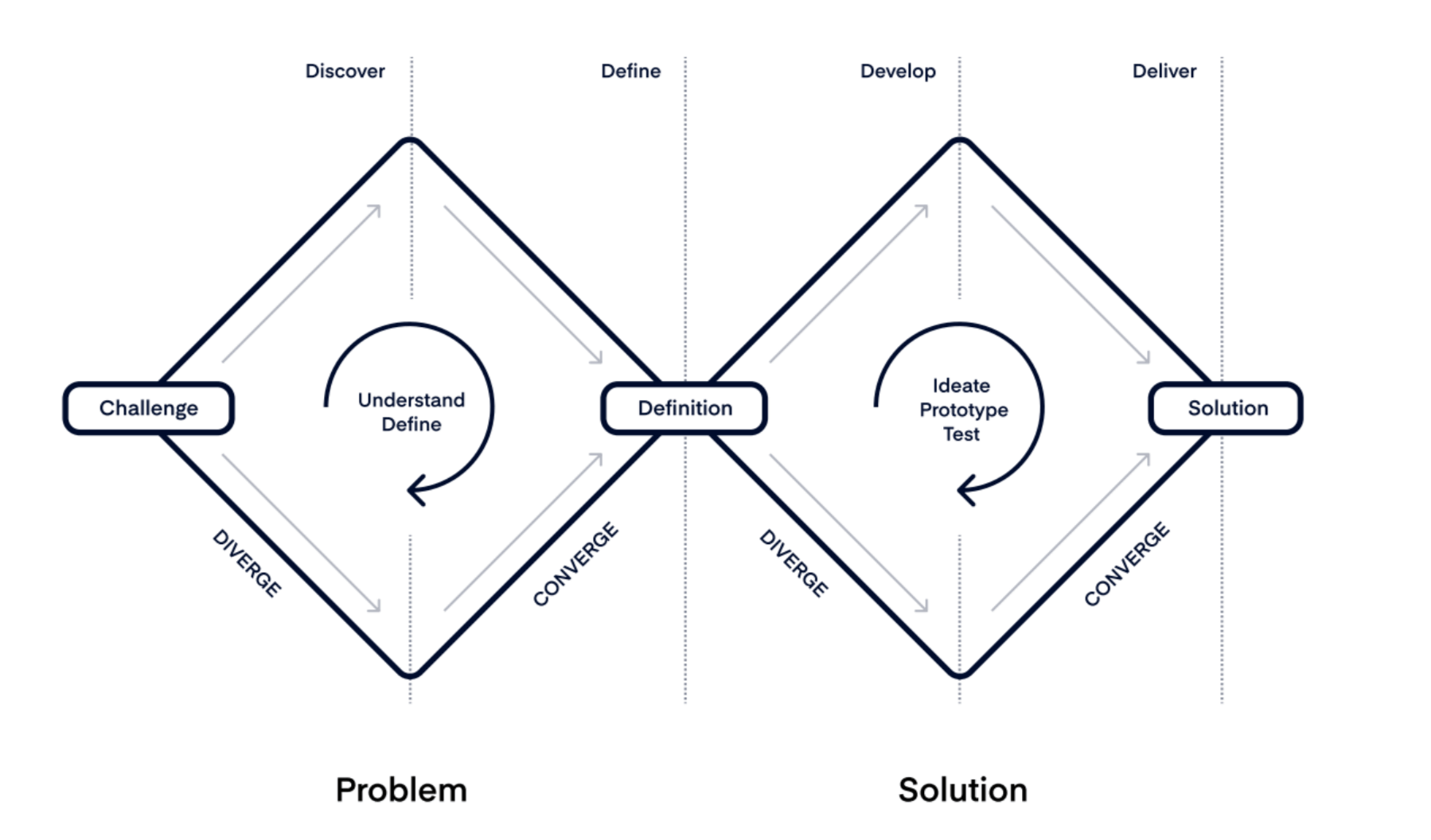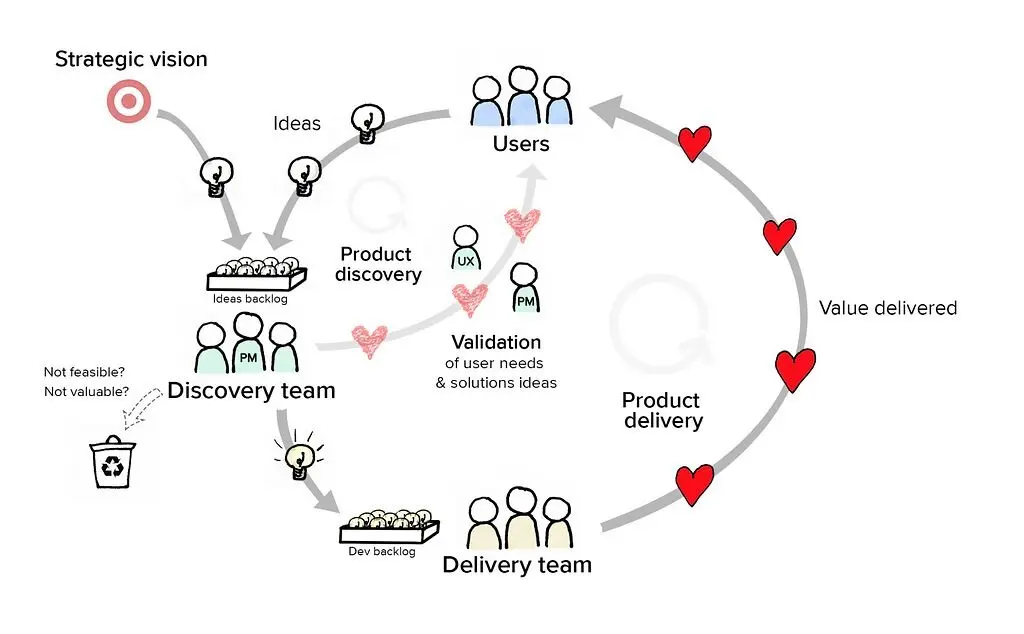Why Half Your Ideas Suck (and How Product Discovery Can Save the Day)
If you’re a founder, a product manager, or someone who’s spent any time wrestling with roadmaps and feature lists, you already know how this feels.
Some ideas sound brilliant in brainstorming sessions (complete with whiteboard sketches and coffee-fueled optimism), but once they hit the real world, they fall flat. And sometimes, even the good ones need a few trips back to the drawing board before they work.
This is where UX and product discovery can help. Not as magical cures (we’re not here to sprinkle fairy dust) but as practical, proven ways to sort through the chaos and build products people want to use. So, whether you’re trying to create the next big thing or just avoid throwing resources at a feature nobody asked for, you’re in the right place.
In this article, you’ll see how going after risks early, validating ideas quickly, and making users happy (without breaking the bank) can be the difference between success and yet another unused app cluttering someone’s phone.
The Two Inconvenient Truths of Product Development
If you’ve been in the product game for a while, you’ve probably encountered two hard-to-swallow truths that no one really wants to talk about (but secretly everyone knows):
Truth #1: Almost half of the ideas on your roadmap won’t deliver any real value.
Yep, you read that right. No matter how innovative or exciting they seemed in the brainstorming session, there’s a good chance those “brilliant” ideas won’t resonate with customers—or worse, they won’t even get noticed. Maybe the value isn’t there, or maybe it’s just not what your audience is looking for right now. Either way, they’re dead weight.
Truth #2: Even the good ideas need a lot of tweaking.
Let’s say you do stumble upon an idea that’s viable, valuable, feasible, and usable (the product manager’s dream quartet). Even so, it’ll probably still take multiple iterations to get it right. That’s because great products aren’t born perfect. They’re sculpted, reshaped, and sometimes downright wrestled into greatness through feedback and iteration.
These truths can be a tough pill to swallow, but ignoring them is even riskier. In today’s competitive climate, sorting the winners from the duds and iterating quickly on promising ideas is more critical than ever.
The Solution: Address Risks Early
Risks are inevitable. The key is dealing with them before they spiral out of control. That’s where UX and product discovery enter the chat. By prototyping and testing ideas with real users, engineers, and stakeholders early in the process, you can uncover potential risks and fix them before they become costly mistakes.
As Marty Cagan puts it, “If we can prototype and test ideas with users, customers, engineers, and business stakeholders in hours and days, rather than weeks and months, it changes the dynamics—and most importantly, the results.”
Translation? Address risks early, move fast, and save yourself a world of trouble later.
What Is This “Product Discovery”?
Product discovery is the continuous process of understanding your customers' needs and validating your ideas before going headfirst into development.
Why is this such a big deal? Simple: it saves you time, money, and countless headaches. Instead of building features nobody asked for, you focus on the ideas that matter.
When does product discovery come in handy? Pretty much anytime you’re dealing with:
- A brand-new product launch.
- Major updates to an existing product.
- Big business shifts—like new opportunities, mergers, or even a complete pivot in strategy.
When all is said and done, it’s not a one-and-done deal. Product discovery thrives as a continuous process, constantly evolving alongside your customers, their challenges, and your business goals.
The Product Discovery Process (Exemplified)
Now let’s move to the “how to make sure your roadmap isn’t just a list of cool stuff, but a thought-out strategy that delivers value” process.
A great way to think about this is through the Double Diamond model, which breaks discovery into two key phases: the problem space (understanding and defining the problem) and the solution space (developing and testing solutions). The magic lies in moving through these phases systematically:
- You start by gathering information to uncover the underlying challenges.
- Then, you sift through the noise to reframe the problem, making sure you’re solving what matters.
- Next, you brainstorm creative solutions and prototype them.
- Finally, you test those prototypes with real users to refine and iterate until you get it right.

But let’s make this less abstract. A few years ago, during the COVID-19 pandemic, an EdTech company (and our client) faced a challenge. They served 650 schools and over 100,000 users, but their product’s onboarding process for teachers was, well, a mess. Teachers were struggling, which meant students were too. The goal wasn’t just to fix onboarding—it was to redesign the entire product for a better experience.
Using the product discovery process, our team started by going deep into research: mapping the customer journey, defining user personas, and pinpointing the most pressing pain points, etc.
Armed with the info, we aligned the team around the problem and brainstormed potential solutions. Prototypes were developed and quickly put in front of teachers for feedback.
The results were clear—while the new design addressed many frustrations, there were still areas to improve. After iterating based on feedback, we finalized the design and created assets and systems ready for development.
Bottom Line?
This discovery-driven approach didn’t just fix the immediate problem—it set the stage for ongoing improvements. The feedback from the redesigned onboarding flow sparked fresh ideas and updates. That’s the beauty of continuous discovery—it’s a loop that keeps giving.
Ok, so why does this matter for your product? Because great ideas rarely come fully formed. They’re shaped by testing, tweaking, and adapting in response to real-world feedback.
Product discovery = you’re always learning, always improving, and always delivering.

Continuous Product Discovery is Essential
Think of product discovery like going to the gym. You don’t just work out once and expect to stay fit forever (though wouldn’t that be nice?). Similarly, discovery isn’t a one-time effort.
The truth is, the world doesn’t sit still. User needs change, industries evolve, and markets shift. A feature that felt groundbreaking two years ago might be yesterday’s news today.
That’s where continuous discovery shines. It opens up doors to fresh opportunities you might not have seen otherwise. Every bit of user feedback, every interaction, every little data point feeds into the process. It’s an endless cycle of learning and improving.
Ultimately, it’s the best way to make sure your product is never static, never outdated, and always one step closer to perfect.




